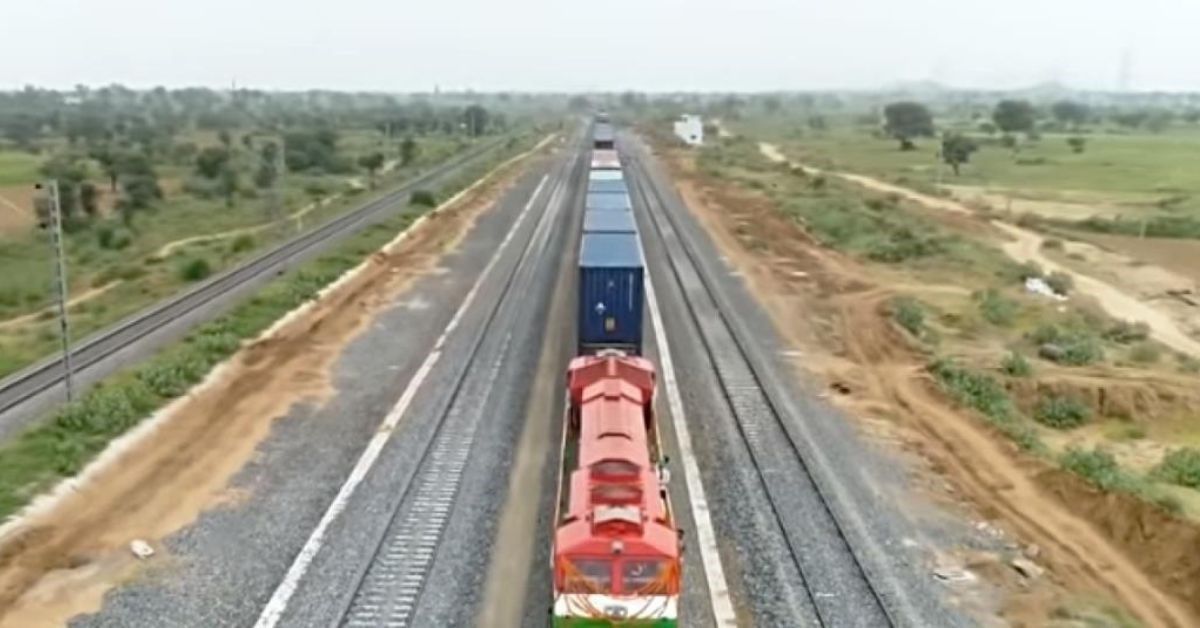The Eastern and Western Dedicated Freight Corridors (EDFC and WDFC) recorded a combined 47% increase in freight train operations during FY 2024-25, with trips rising from 88,225 in 2023-24 to 1,30,116.
Vacant trips accounted for around 34% of total movements, largely due to coal and cement wagons returning empty, as these cannot be repurposed for other goods. Containerized cargo led the commodities transported, accounting for 24% of trips, followed by coal at 19% and miscellaneous items at 11%. Other goods—including cement, clinker, iron and steel, foodgrains, fertilizers, and petroleum products—each contributed between 1% and 4%.
DFCCIL credited the growth to initiatives such as commissioning new Gati Shakti Cargo Terminals and sidings along the corridors. Currently, 2,741 km of the 2,843 km total corridor length is operational, with the remaining 102 km from Vaitrana to Jawaharlal Nehru Port Trust (JNPT) on the WDFC expected by December 2025. The WDFC spans 1,506 km from Dadri (UP) to JNPT (Maharashtra), of which 93.2% is operational, while the 1,337 km EDFC is fully operational.
“Freight services have steadily grown with phased commissioning and the introduction of more trains. In 2020-21, only 20 trains ran when 331 km was operational. Today, over 350 trains operate daily, and full WDFC commissioning is expected to further boost operations,” a DFCCIL official said.
DFCCIL ensures smooth operations but does not handle freight booking or finances; these are managed by Indian Railways and the Ministry of Railways, respectively. Efforts are underway to reduce empty runs through return-trip discounts of up to 20% and the introduction of multi-purpose wagons.
With 115 stations along both corridors, DFCCIL is promoting public-private partnerships, allowing private players to open sidings or freight terminals on railway land, expanding private-sector participation in freight logistics.









